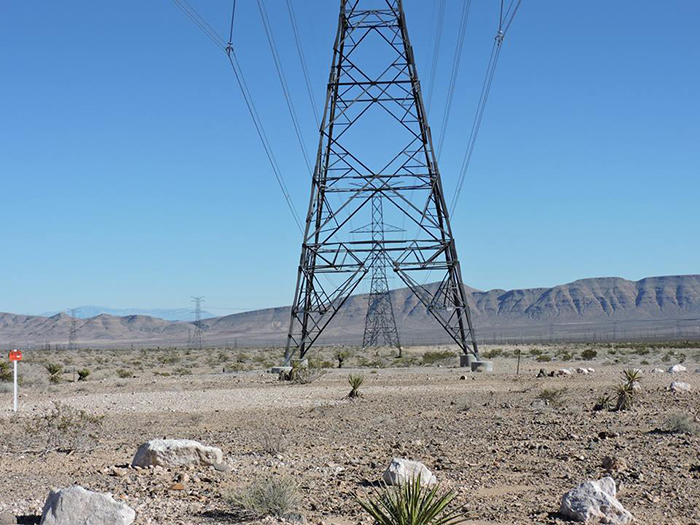Tortoise Translocations
December 27, 2016 - Clark County NV - The second quarter 2016 desert tortoise report for the Playa Solar Project (1,760 acres) on the Dry Lake South Solar Energy Zone reveals that 77 tortoises have been moved, including 42 adults and 35 juveniles. The report was prepared for the Bureau of Land Management. Playa solar initiated translocation activities in September 2015. One adult tortoise suffered mortality during pre-construction activities.
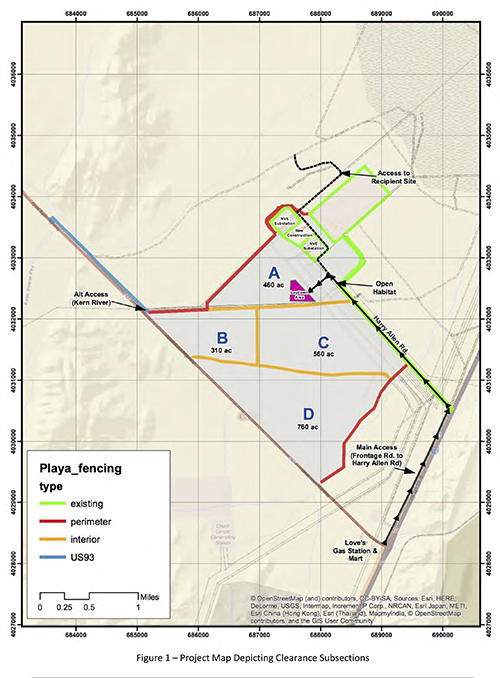
^Area of the solar project desert scraped and fenced off, with tortoises translocated outside the fence.

^Radiotelemetered tortoises moved outside the fence and project site, into adjacent desert.
^Scraper-graders lined up as they clear desert ecosystems and tortoise habitat.
^Tortoise exclusion fence as tortoises are removed from the thousands of acres to make way for development.
^Graded desert inside the tortoise exclusion fence.
^Mojave yucca and barrel cactus to be removed for solar project development.
^Beavertail cactus on the Dry Lake Solar Energy Zone.
^Desert tortoise habitat slated to be bulldozed and graded for solar energy at the Dry Lake basin.
^Former Mojave Desert graded flat for energy development.
^Scraper-graders lined up after grading desert scrub.
Three Projects Approved on Dry Lake Solar Energy Zone
June 1, 2015 - Clark County NV - As part of an approved Solar Energy Zone under the federal Solar Programmatic Environmental Impact Statement, the basin north of Las Vegas has had three solar companies bid on leasing land including the ability to build projects with expedited environmental review. These photos show parts of the 3,083 acres that have been approved for the development of three solar projects. All three projects were approved today by the Interior Department. They are on the recently established Dry Lake Solar Energy Zone on Bureau of Land Management Lands in Nevada. The Dry Lake Valley has many transmission lines running through it along with five natural gas plants in the area. While it has its share of disturbance, it still is a natural part of the Mojave Desert that will soon change even more for large-scale energy.
The solar developers include First Solar, NV Energy, and Invenergy Solar Development, LLC.
The 3,083 acres that will be developed in the Dry Lake Solar Energy Zone happens to be healthy Mojave Desert habitat that supports many species. The Bureau of Land Management determined in their environmental review that it is an important area for desert tortoise connectivity. The Interior Department is promoting that your public participation time has been cut in half - "The expedited reviews of these three projects were completed in less than 10 months, or less than half the amount of time it took under the previous project-by-project system"
Also see the Solar PEIS page on Dry Lake Solar Energy Zone.
Basin & Range Watch comments of the Dry Lake solar project environmental assessments >>here.
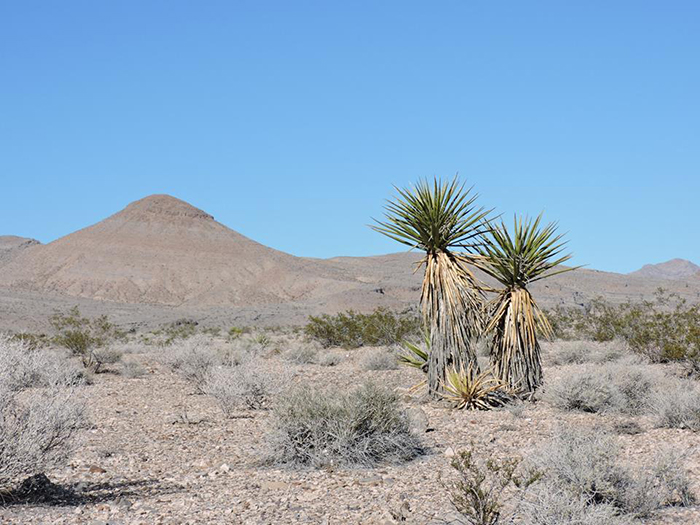
^Mojave yucca and open desert in Dry Lake Valley.

^Interesting limestone desert pavement, a natural sediment type in the desert where fine particles are blown away by wind leaving gravel.
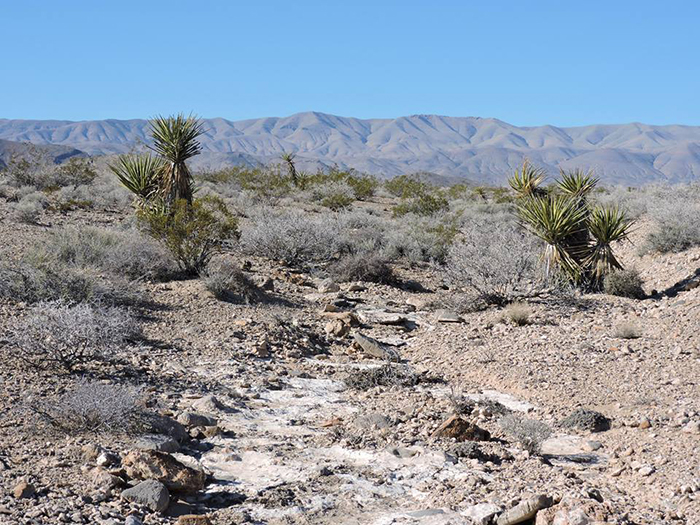
^Eroded limestone wash in Dry Lake Valley.
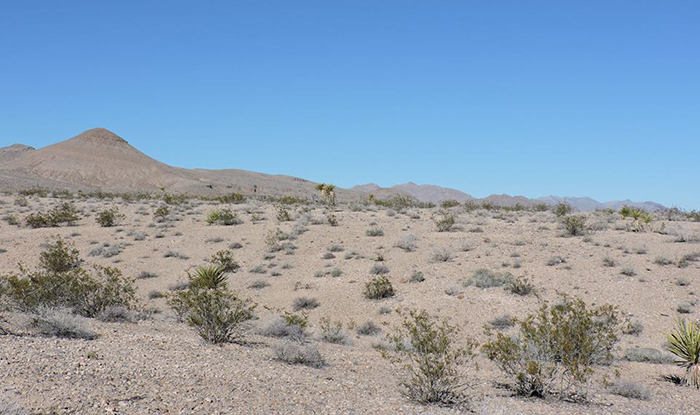
^Tortoise habitat in Dry Lake Valley.
^Existing transmission line in Dry Lake Valley.
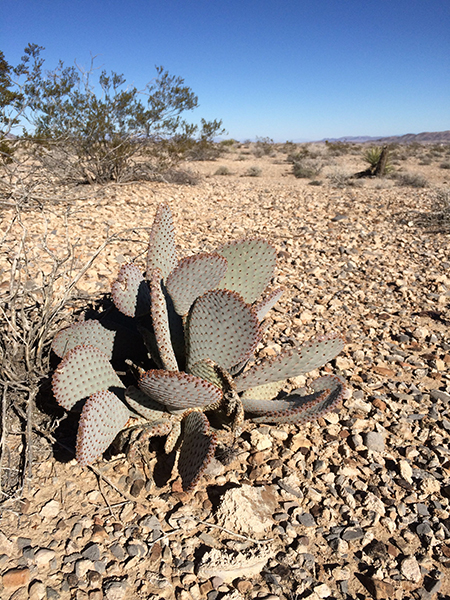
^Beavertail cactus.
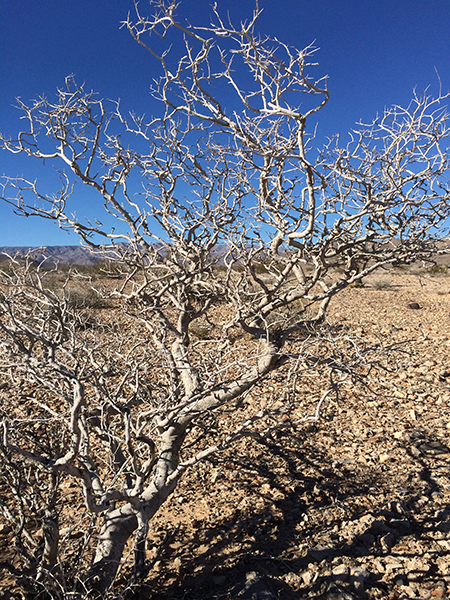
^Indigo bush in winter before its leaves emerge.
Wilderness Views
Next to Dry Lake Valley are the dramatic limestone cliffs and canyons near the Arrow Mountain Wilderness Area. We explored the place and some of the solar projects will be visible from these wild canyons.
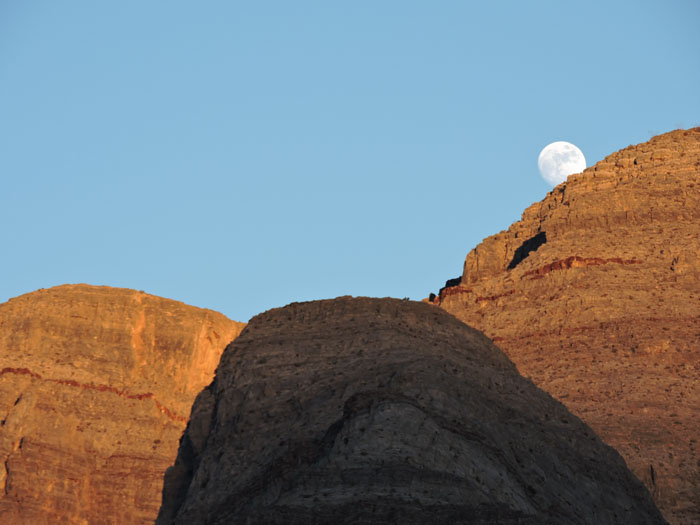
^View of Dry Lake Valley from the surrounding limestone mountains.
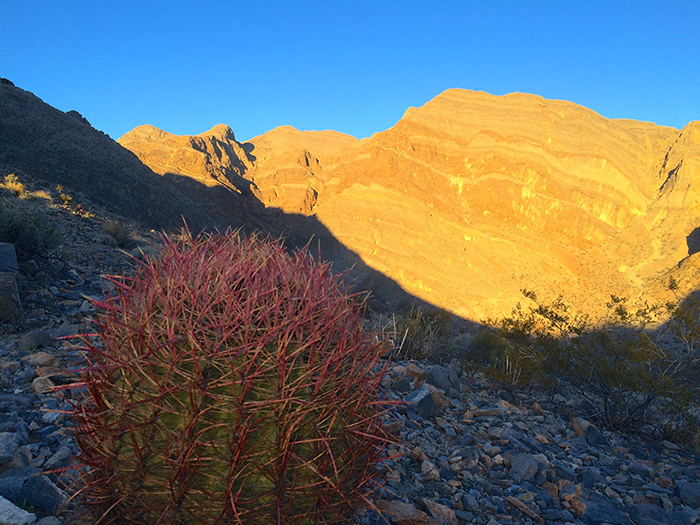
^Cottontop cactus in limestone mountain next to Dry Lake Valley.
